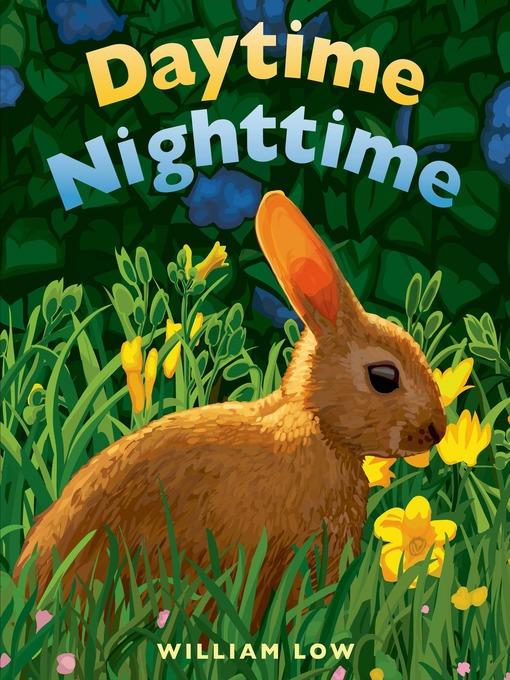
Daytime Nighttime
کتاب های مرتبط
- اطلاعات
- نقد و بررسی
- دیدگاه کاربران
نقد و بررسی

April 21, 2014
Different nocturnal and diurnal animals are featured throughout this art-driven primer, which is divided by the simple dichotomy of day and night. “What do you see in the daytime?” asks Low, after which appear lush portraits of a grasshopper, red-tailed hawk, beaver, and other creatures, posed against shimmering summer greenery and pale blue skies. At night (“What do you see at nighttime?”), bats, frogs, raccoons, and owls take center stage, and a luminous full moon replaces the sun. Low brings a warm, honeyed sense of light to each scene, and the bare-bones narrative and up-close imagery make a strong impact. Ages 4–8.

May 1, 2014
An extremely simple text describes animals a rural child might see in the daytime and nighttime.Except for a prefatory "What you see in the daytime?" (and a corresponding query for nighttime), the text rarely exceeds one word per spread. In the daytime, a child (a relatively light-skinned little girl with long hair and bangs) might see butterflies, robins, bumblebees, grasshoppers, red-tailed hawks, beavers, rabbits and puppies (as well as the sun). Spread by spread, Low's painterly digital illustrations depict the animals described (in most cases, just one of each, despite consistently plural labels). A robin tugs at a worm; a grasshopper perches on a blade of grass; a red-tailed hawk soars, silhouetted against a blue sky. Nighttime animals include fireflies, bats, an owl, a frog, raccoons and teddy bears (the child is seen slumbering with an obviously beloved bear clutched in her arms, other stuffed animals gazing benignly from the margin of her bed). Except for the potential confusion between plural labels and singular animals and the fact that the bumblebee as depicted doesn't look as satisfyingly round as children likely imagine them, it's a lovely way to introduce children to the natural world, reminiscent of some of Jim Arnosky's books for the very youngest children.Calm and soothing-a nonthreatening backyard adventure. (Picture book. 2-4)
COPYRIGHT(2014) Kirkus Reviews, ALL RIGHTS RESERVED.

May 1, 2014
PreS-Gr 1-Low brings his brand of hyperrealistic painting-so effective in his Machines Go to Work (2009) and Machines Go to Work in the City (2012, both Holt)-to the natural world. Here, he explores the concepts of day and night via a simple text and gorgeous, full-bleed, double-page paintings that feature diurnal and nocturnal animals reveling in their elements. "What do you see in the daytime?" highlights such light-dappled backyard and neighborhood denizens as butterflies, robins, bumblebees, grasshoppers, red-tail hawks, beavers, rabbits, puppies, and the sun. In turn, the question "What do you see at nighttime?" is answered with fireflies, bats, owls, frogs, raccoons, teddy bears, and the moon. The animal choices and activities are in keeping with experience and sensibilities of young children. A larger-than-life image and supersaturated colors capture the textures and defining details of the creatures. The sunlight playing off the spring flowers and the almost translucent ears of rabbit are at once hyperreal and almost otherworldly. The cool blues of evening are equally inviting, showing the creatures bathed in the light of the full moon. A captivating concept book, a lovely introduction to the natural rhythms of the animal kingdom, and a sweet selection to share at the end of a busy day.-Luann Toth, School Library Journal
Copyright 2014 School Library Journal, LLC Used with permission.

























دیدگاه کاربران